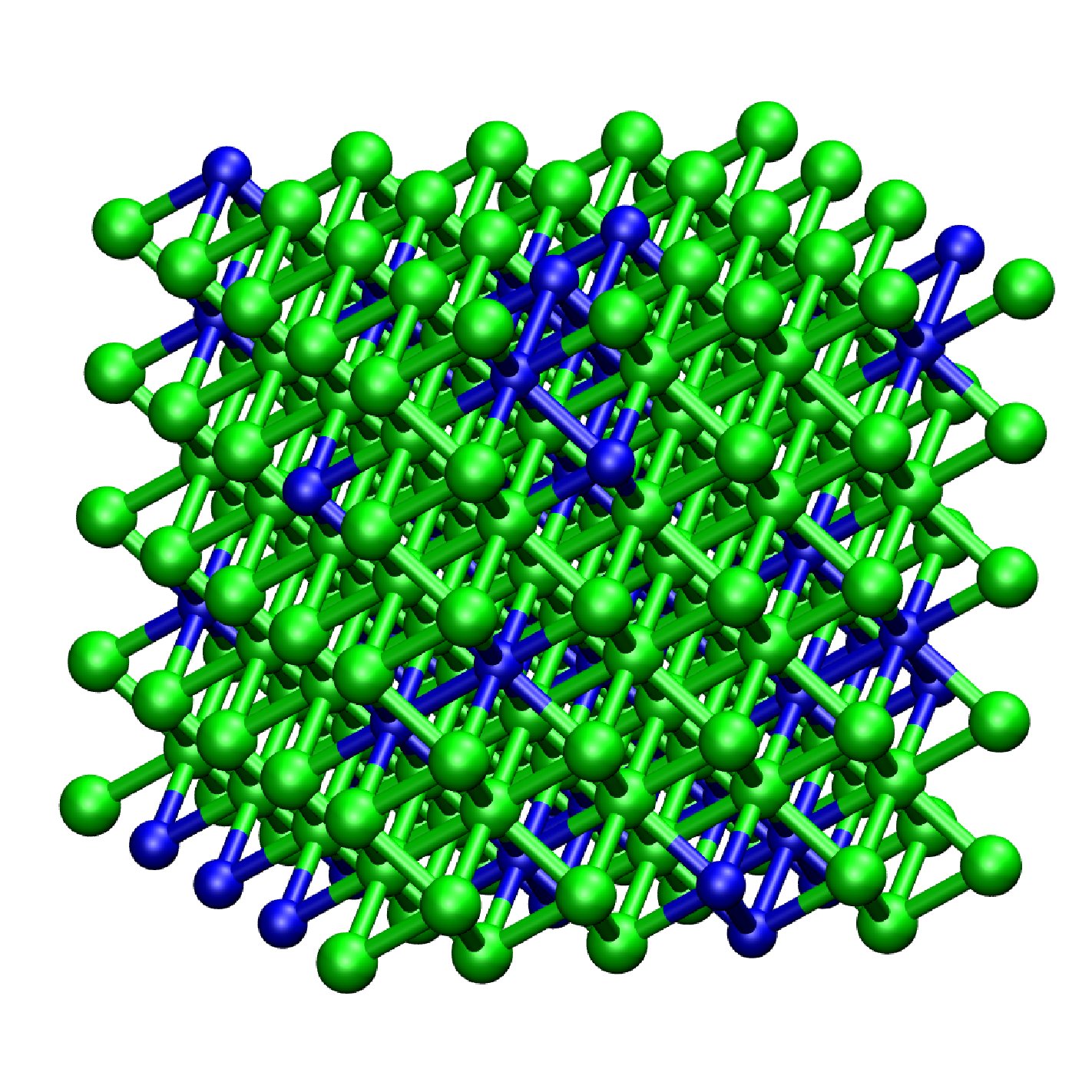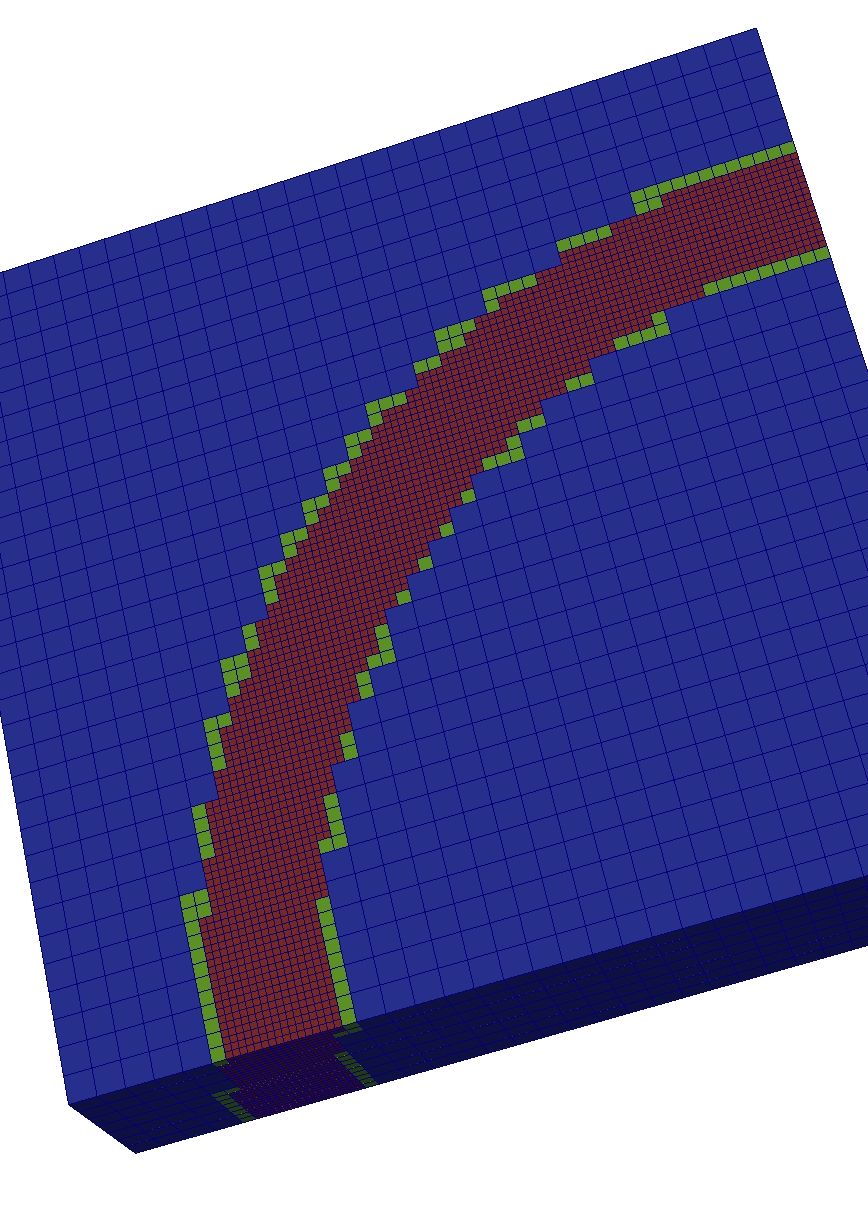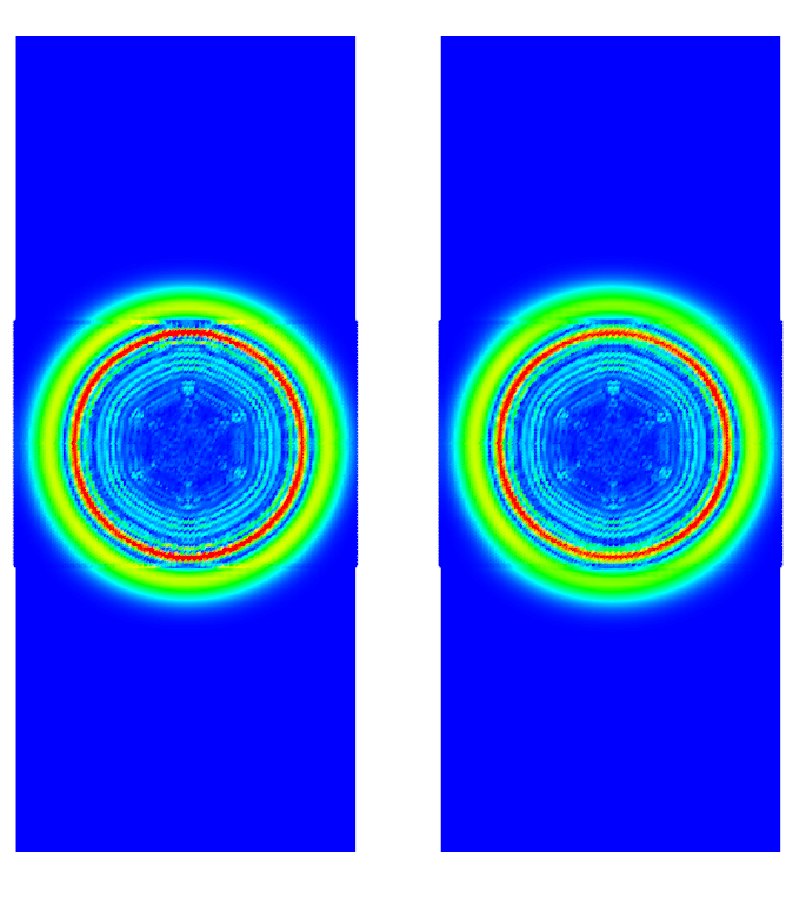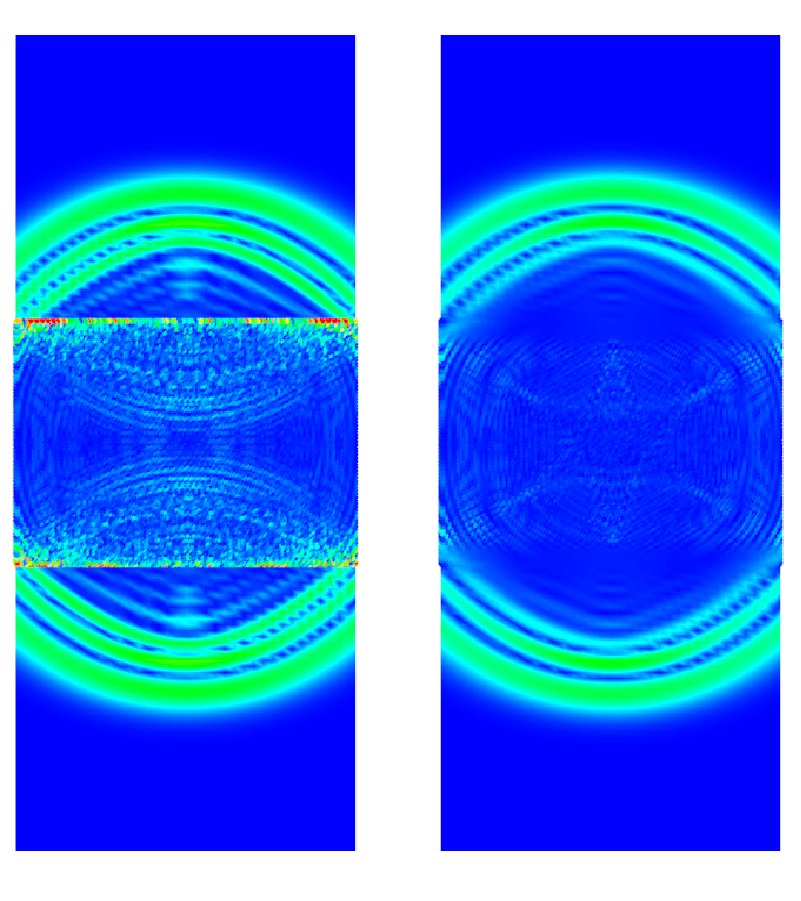Multiscale Effects in Solid Mechancis - Scale Bridging
Effects on microscopic level can influence the behavior of a material body in two ways.Firstly an inter atomic potential determines the arrangement of the particles on the mircoscale.
Secondly often the macroscopic behavior of solids is governed by effects on a fine scale.
Therefore, often for the numerical simulation of these multi scale effects different simulation techniques
on different scales are employed. One possibility is to use molecular dynamics (MD) on the micro-scale
and finite elements (FEM) on the macro-scale:
Atomistic View vs. Continuum Mechanics


Fine scale: MD |
Coarse scale: FEM |
|
| atomic displacement field | continuum displacement field | |
| fast oscillations of atoms | slow oscillations | |
| atomic forces (discrete modeling) | continuum forces |
Bridging the Scales: The Weak Coupling Method
The Weak Coupling Method is a the coupling approach where different (atomic and continuous) modelsare used simultaneously within a single simulation process. The models, however, coexist in a small
subdomain (overlap region) only. Here, the explicit exchange of information between the different scales
needs to be realized with specialized transfer operators. In other parts of the computational domain,
we either use an atomic model or a continuum model only.
The weak coupling concept involves three steps:
- In first step, an approximation of the fine scale displacement embeds the discrete values into a functions pace.
- In the second step we perform a L^2-like projection separating the coarse from the fine scale.
- In the third and final step, the resulting low-frequency contributions are extended to the whole computational domain.
Example:



Initial Wave in 2D propagating into the Finite Element part. Left: Reflection on the Interface. Right: Weak Coupling method - a seamless transition
Key Publications:
K. Fackeldey, R. Krause: Multiscale Coupling in Function Space - Weak Coupling between Moelcular Dynamics and Continuum Mechanics, Intern. J. Num. Meth. Engrg, 79, Iss 12, p. 1517 - 1535 (2008)K. Fackeldey: The Weak Coupling Method for Coupling Continuum Mechanics with Molecular Dynamics, Dissertation Uni Bonn 2009
K. Fackeldey, D. Krause, R. Krause, C. Lenzen: Coupling Molecular Dynamics and Continua with Weak Constraints, submitted to SIAM Multiscale Model. Simul.
Further Investigation:
- More complex models on the atomistic scale,for instance models considering temperature effects
- Adaptive Choice of the Timestep
- Energy-based coupling strategies / analysis of hierarchic coupling techniques
Contact
Dr. Konstantin FackeldeyKonrad-Zuse-Zentrum für
Informationstechnik Berlin (ZIB)
Numerical Analysis and Modelling, Room 4103
Takustraße 7
14195 Berlin
Germany
| Telephone: | +49-30-8 41 85-347 |
| Email: | fackeldey at zib.de |